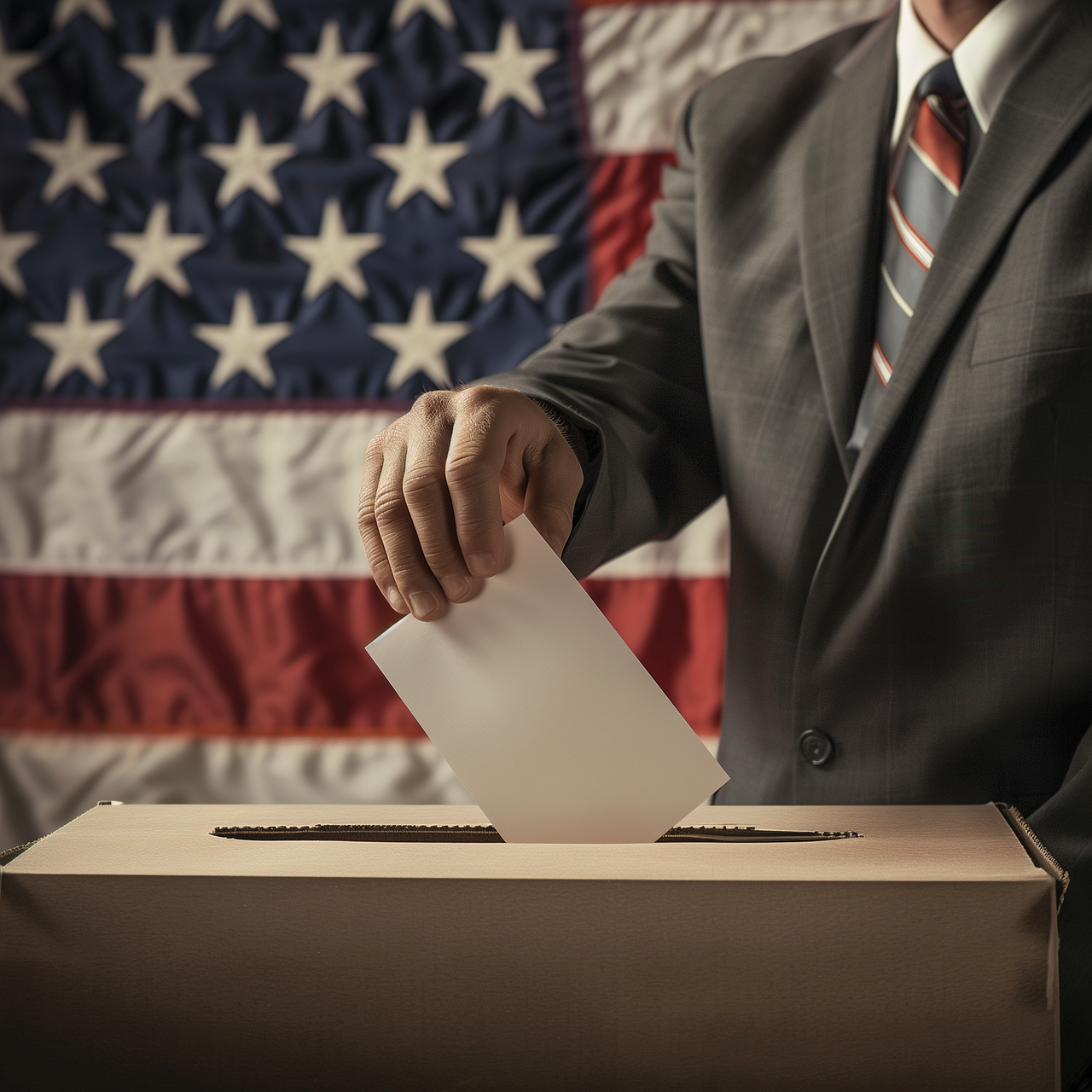Written By: Matt Kramer
Since 1926 we've had 17 different presidents.
Has electing a new president changed the long-term direction of the market?
Should you make changes to your portfolio based upon a new president?
Here is some data to help answer those questions.
Every four years, I have daily conversations regarding the impact of an election on one's investments. Here at Serving Those Who Serve, we have been helping families plan for their future and invest their nest eggs since 1988. During this time, we have managed the transition of seven, soon to be eight, administration changes. One of the top questions we are getting in our practice relates to how the market will react to the upcoming election. The answer might surprise you.
So, let's begin with some historical data courtesy of our friends at Dimensional Fund Advisors.
How Much Impact Does the President Have on Stocks? | Dimensional
Since 1926, we have had 17 presidents in office. The chart below highlights each's annual returns.
| President | Start Month | End Month | Average Annual Return |
| Calvin Coolidge (R) | Jan-26 | Feb-29 | 28% |
| Herbert Hoover (R) | Mar-29 | Feb-33 | -22% |
| Franklin D. Rosevelt (D) | Mar-33 | Mar-45 | 16% |
| Harry Truman (D) | Apr-45 | Dec-52 | 16% |
| Dwight D. Eisenhower (R) | Jan-53 | Dec-60 | 15% |
| John F. Kennedy (D) | Jan-61 | Oct-63 | 13% |
| Lyndon B. Johnson (D) | Nov-63 | Dec-68 | 10% |
| Richard M. Nixon (R) | Jan-69 | Jul-74 | -1% |
| Gerald R. Ford (R) | Aug-74 | Dec-76 | 19% |
| James Carter (D) | Jan-77 | Dec-80 | 12% |
| Ronald Reagan (R) | Jan-81 | Dec-88 | 15% |
| George H. W. Bush (R) | Jan-89 | Dec-92 | 16% |
| William J. Clinton (D) | Jan-93 | Dec-00 | 17% |
| George W. Bush (R) | Jan-01 | Dec-08 | -2% |
| Barack Obama (D) | Jan-09 | Dec-16 | 15% |
| Donald J. Trump (R) | Jan-17 | Dec-20 | 16% |
| Joseph R. Biden (D) | Jan-21 | Dec-23 | 11% |
The data shows that the average yearly return of Democratic presidents (13.67) is higher than that of Republican presidents (9.38). But for this to tell the entire story, you would need to make the near-impossible case that the Great Depression and Great Recession were caused solely by the presidents at the time. Taking out these two extremely volatile presidencies (Bush Jr. and Hoover) would increase the average return of Republican presidents to 15%.
Now, let's take a stroll through history, beginning with Calvin Coolidge. We see he enjoyed a robust market return from 1/1/1926 to 2/28/1929. It is worth noting that Mr. Coolidge also contended with a recession from late 1926 to late 1927.
Mr. Coolidge was followed by Herbert Hoover and between 3/1/1929 and 2/28/2933, the market unfortunately lost 22% per year. Mr. Hoover was beset by recession from late 1929 until his leaving office in 1933.
Following Mr. Hoover was FDR, who served in office from 3/1/1933 until 3/31/1945 (just before his death on 4/12/1945) and enjoyed annual returns of 16%. Much of this can be attributed to the low market level in early 1933. Interestingly, Mr. Roosevelt had two recessions during the period and wrestled with a maximum unemployment rate of over 25%.
In April 1945, Harry S. Truman held the White House and promptly encountered two recessions. Yet during his time in office, the market returns mirrored Mr. Roosevelt's 16%.
Dwight Eisenhower took office on January 1, 1953, and during his eight years in office, the economy encountered not one, not two, but Three Recessions. If you are bracing for a poor result, don't. Ike enjoyed market returns of 15%.
John F Kennedy followed in January of 1961 and the economy was still in the grip of recession. Considering that his time in office was tragically cut short by his assassination, we would be reasonable in expecting a loss over this period, but the market averaged 13%.
Lyndon Johnson assumed the presidency in 1963 and was elected to an additional term. During that time, the market returned 10% per year. Interestingly, LBJ had no recessions.
Richard Nixon began his White House tenure in January 1969 and served until his resignation in late 1974. During this time Mr. Nixon struggled to conclude the Vietnam War, endured two recessions, and withstood persistent inflation. The result? The market suffered average losses of 1% per year.
Gerald Ford succeeded Mr. Nixon and only served the completion of his second term. Assuming the office was held during a recession, it is worth noting that Mr. Ford also faced elevated inflation and an unemployment rate of 9%. A recipe for poor returns, right? Once again, the market surprised with a 19% annual return.
Jimmy Carter took office in 1977 and served only one term. His time in office was beset by a recession, a maximum inflation rate of a whopping 10.2% and unemployment topping 7.8%. So, it is perhaps surprising that during this time, the market returned an average of 12% per year.
In January of 1981, Ronald Reagan took office and served two full terms. Despite contending with an early recession and contending with an inflation rate of 10.8 as of Black Monday (October 19, 1987), the market performance was 15% per year.
Reagan passed the torch to George H.W. Bush and during his single term, commencing in January 1989 and ending in 1992, he experienced an unemployment rate of 7.8% and a mid-term recession. Nevertheless, the market yielded annual returns of 16%.
On January 1, 1993, Bill Clinton took office and by 12/31/2000, the market had returned 17% annually. In addition, the market and the president had to contend with a 7.3% unemployment rate.
The presidency of George W. Bush began with an almost immediate recession in January 2001. It would close with one of the worst markets in addition to a financial crisis. This, combined with the 9/11 terror attacks and the bursting of the "tech bubble," set the stage for a decrease in the indexes and an annual return of -2%.
Barack Obama opened his presidency in the throes of the "Great Recession," as well as contending with a 10% unemployment rate. However, by 12/31/2016 at the end of his final term, the market recovery delivered an annual return of 15%.
2016 saw the election of Donald Trump. His single term was marked by the COVID-19 pandemic and its recession, which resulted in a spike in unemployment of 14.8%. Still, by 12/31/2020, the average return of the market was 16%.
Rounding out our sample set is the presidency of Joe Biden. His single term featured no recession and a as of the end of 2023 and annual return of 11% (Note as of this writing the market has enjoyed solid gains so the final growth may be higher by terms end.)
About now you may be thinking, "Thanks for the high school history lesson, Matt, but what is the point?"
Learn more about your retirement benefits at our No-Cost webinars, featuring Ed Zurndorfer -
My point is that presidencies in and of themselves are not terribly impactful or predictive relative to stock market performance.
Several studies and analyses suggest that the stock market tends to be relatively indifferent to the political party or specific president in office over the long term.
Here are a few key points:
Historical Trends Show Limited Presidential Influence: Data shows that from 1929 to the end of 2023, the average annualized return of the S&P 500 during presidential terms is over 11%. Only three presidents have seen negative returns. (Bush Jr, Nixon, Hoover) This suggests that while short-term fluctuations might occur, the stock market generally trends upward regardless of who holds office.
Stock Market Performance Driven by Multiple Factors: Market returns are influenced by a blend of factors such as monetary policy, interest rates, inflation and global events. While presidents have some influence on economic policy, much of the market's movements are driven by external factors that a president cannot fully control. (Such as the September 11 attacks under Bush Jr. or Covid during Trump)
Uncertainty vs. Political Parties: The market reacts more to uncertainty than to the political party in power. For example, while elections introduce volatility, long-term market performance doesn't necessarily favor one party over another. Investors are often more concerned with stability and policy continuity than the specific policies of an administration.
The Efficient Markets Hypothesis: According to this economic theory, stock prices already reflect all available information, including political developments. Thus, market responses to presidential elections tend to be more about short-term reactions rather than sustained trends based on who's in office.
So, I would say our conclusion is:
Staying Invested is Key: Long-term investment strategies tend to perform well regardless of who occupies the White House. Market experts often advise investors to remain invested rather than attempt to time the market based on political events.
The information has been obtained from sources considered reliable but we do not guarantee that the foregoing material is accurate or complete. Any opinions are those of Serving Those Who Serve writers and not necessarily those of RJFS or Raymond James. Any information is not a complete summary or statement of all available data necessary for making an investment decision and does not constitute a recommendation. Investing involves risk and you may incur a profit or loss regardless of strategy suggested. Every investor’s situation is unique and you should consider your investment goals, risk tolerance, and time horizon before making any investment or financial decision. Prior to making an investment decision, please consult with your financial advisor about your individual situation. While we are familiar with the tax provisions of the issues presented herein, as Financial Advisors of RJFS, we are not qualified to render advice on tax or legal matters. You should discuss tax or legal matters with the appropriate professional. **


